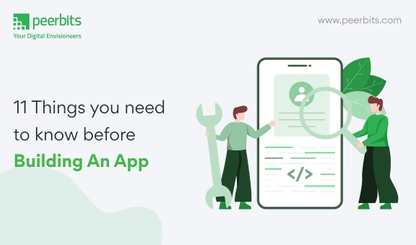Python is becoming the backbone of engineering teams. Whether it’s used for fast-moving AI apps, backend systems, or automation scripts, Python is showing up in critical places where reliability and speed matter.
According to recent statistics, Python was the third most used programming language in 2024, right behind JavaScript and HTML/CSS. Its role is not limited to scripting or hobby projects anymore. Today, Python runs production-grade tools used by teams at Netflix, Google, NASA, and hundreds of AI-first startups.
In this blog, we’ll walk through the factors that are set to push Python even further in 2025. If your business is planning to hire python developers or outsource product development, understanding where Python fits in will help you move faster and smarter.
What helped Python reach this level of growth?
Python’s growth hasn’t been accidental. It’s the result of practical strengths that continue to make it a preferred choice across industries from early-stage startups to enterprise tech teams. Here’s a quick look at what’s helped it reach this point.
Built for simplicity and speed
Python’s syntax is clean, readable, and easy to work with. This reduces the learning curve for new developers and makes collaboration across teams more efficient. Whether you're building an MVP or scaling a system, Python keeps development fast and straightforward.
Rich and growing ecosystem
With over 530,000 packages available on PyPI, Python has one of the most extensive ecosystems among programming languages. From frameworks like Django and FastAPI to libraries for data, automation, and AI, teams rarely need to start from scratch.
Versatility across domains
Python adapts well to almost any use case. It's used in backend systems, machine learning, test automation, data engineering, cloud scripting, and internal tools. This cross-domain flexibility makes it a smart long-term investment for businesses hiring or outsourcing development.
What will help Python grow in 2025
Python's rise reflects deeper shifts in how companies build, automate, and scale their software systems. As development needs evolve, Python continues to expand into new areas while reinforcing its role in others. Here's what will push its growth even further in 2025.
AI and GenAI explosion will center around Python
Python remains the leading choice for building AI and GenAI applications. Most large language models and real-time AI tools are built using Python-first libraries.
Tools like PyTorch, LangChain, and the OpenAI SDK are all native to Python, making it easier for developers to move fast with GenAI systems.
Use cases like chatbots, AI agents, and enterprise search tools are gaining ground, and Python development companies are at the center of most of these implementations.
Backend development is leaning toward Python
Backend development is shifting toward Python because of frameworks like FastAPI and Django Rest Framework. They are efficient, scalable, and widely adopted.
With strong async support and reliable security practices, Python has become a trusted choice for backend systems. Startups use it to build MVPs quickly. Enterprise teams rely on it for internal APIs and service-based architectures.
DevOps scripting and automation won’t slow down
Python plays a key role in DevOps workflows. It’s the foundation for tools like Ansible, SaltStack, and Fabric.
In CI/CD environments such as Jenkins, GitHub Actions, and CircleCI, Python is used to build and maintain automation scripts. Many companies now prefer Python over Bash for its readability and long-term maintainability.
Data engineering is moving from legacy tools to Python
Python is becoming a preferred language for data engineering. Libraries like Pandas, Dask, PySpark, and Polars are widely used to process and analyze data.
Python-native orchestration tools like Apache Airflow and Prefect are now standard for ETL pipelines. Teams are adopting Python to build data mesh platforms, manage lakehouses, and create real-time pipelines.
Frontend and app development is opening up for Python
Frontend development and cross-platform app development is becoming more accessible with Python. PyScript brings Python to the browser, while BeeWare and Kivy are gaining attention for mobile and desktop development.
Companies are using Python to create internal dashboards, admin panels, and analytics tools, especially when backend integration and quick iteration are key.
How technology is pushing Python ahead?
It’s not just developer preference driving Python’s momentum. Broader trends in software architecture, team structure, and business tooling are creating even more space for Python to grow.
Python is low-code and business-friendly
Python’s reach now extends beyond traditional engineering teams. Tools like Streamlit, Dash, and Retool make it possible for non-developers to automate workflows and build internal tools.
Teams use Python for report generation, finance operations, and campaign automation. Its readability and flexibility make it an easy fit for everyday business tasks.
Works well with modern architectures
Python integrates smoothly with modern systems. It works alongside GraphQL, supports in-browser execution with Pyodide, and runs in serverless environments like AWS Lambda.
It also provides performance flexibility. Developers can connect Python with Rust using PyO3 or tap into C libraries when speed is critical. This makes it easier for a single developer to handle backend logic, data workflows, and AI features in one stack.
Strong community and faster ecosystem growth
Python’s ecosystem is expanding with help from both individual contributors and engineers from global tech companies.
Tools like Ruff for linting, Pydantic v2.11 for data validation, and Poetry for dependency management are improving the developer experience. The upcoming Python 3.13 release is focused on performance improvements and stronger typing support.
With contributions from top engineers at FAANG companies and major open-source organizations, Python is evolving quickly while staying stable for long-term use.
Python hiring trends in 2025: What businesses need to know
With Python gaining ground across use cases, the hiring landscape is shifting. Business teams planning new products or scaling existing systems should be prepared for what’s ahead.
Demand is rising across roles
Python developers are now needed for a wide range of roles. These include machine learning, backend engineering, DevOps automation, testing, and data workflows.
As we saw, Python ranked among the top three most used programming languages in 2024, and its demand continues to grow in 2025 across global job platforms.
Faster onboarding and delivery
Python’s clean syntax and developer-friendly design make onboarding faster. Teams can ship features or prototypes quicker compared to those using Java or Go.
This makes Python a smart fit for fast-moving environments where delivery speed matters.
Read more: What are Python frameworks? Use cases & more
Outsourcing Python development is growing
More companies are turning to outsourced Python teams to move faster without compromising quality. This model works well for AI-driven MVPs, workflow automation, and dashboard development.
It also helps reduce hiring delays and gives internal teams more bandwidth to focus on core priorities.
Conclusion
Python’s growth is clear and well-earned. It has become a reliable choice for businesses building real software, not just a popular language among developers.
It earned this position through simplicity, speed, and adaptability. From AI and GenAI development to backend services, DevOps automation, data workflows, and even internal apps, Python now sits at the center of real-world business tech stacks.
The shift is backed by numbers. Python ranked among the top three most-used languages in 2024, and demand is rising across roles. Teams are choosing Python not just for what it can build, but for how quickly it gets things done, how easy it is to maintain, and how widely it can be applied.
If Python is on your roadmap for 2025, it’s the right time to explore how our dedicated developers can help you move with clarity, speed, and confidence.
FAQs
Python’s simplicity and rich libraries speed up development, lowering labor hours and reducing bugs, which can save money on both development and maintenance.
Common issues include managing performance at scale, integrating Python with legacy systems, and maintaining code quality as teams grow.
Consider factors like project complexity, budget, timeline, and access to talent. Outsourcing offers flexibility and speed, while in-house teams provide deeper control and alignment.
Implement secure coding practices, keep dependencies updated, use code scanning tools, and conduct regular security audits.
Yes. Python’s ecosystem adapts quickly, and its role in AI, automation, and data science keeps it highly relevant.








